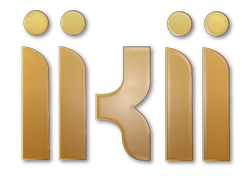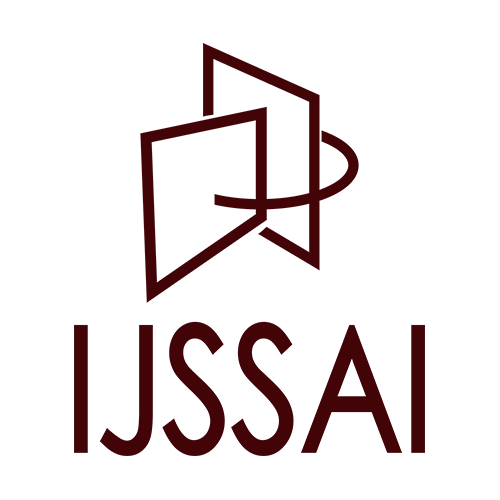Research Article
Ethical and Philosophical Perspectives on Artificial Intelligence-Generated Art
More Detail
1 Faculty of Engineering and Quantity Surveying, INTI International University, Nilai 48000, Negeri Sembilan, Malaysia* Corresponding Author
International Journal of Social Sciences and Artistic Innovations, 5(2), June 2025, 0007, https://doi.org/10.35745/ijssai2025v05.02.0007
Submitted: 02 November 2024, Published: 25 June 2025
OPEN ACCESS 3534 Views 5132 Downloads
ABSTRACT
As artificial intelligence (AI) advances, its role in the creative arts has expanded, bringing both unprecedented opportunities and complex ethical and philosophical questions. This paper examines the ethical and philosophical perspectives on AI-generated art, focusing on key issues such as authorship, authenticity, and the nature of creativity. By analyzing the intersection of AI and traditional art practices, this study explores how AI challenges long-standing views on originality, intention, and artistic value. Key ethical concerns, including intellectual property rights, accountability, and moral responsibility, are discussed, as AI-generated works raise questions about ownership and the role of human agency in creative processes. Using comparative analyses, case studies, and empirical data, this paper highlights the shifting paradigms within the art world as AI emerges as both a tool and an independent creative force. The findings underscore the need for clear ethical frameworks and policies that balance the contributions of human artists and machine-driven creativity, providing guidance for artists, developers, and policymakers navigating this transformative landscape.
CITATION (APA)
Leong, W. Y. (2025). Ethical and Philosophical Perspectives on Artificial Intelligence-Generated Art. International Journal of Social Sciences and Artistic Innovations, 5(2), 0007. https://doi.org/10.35745/ijssai2025v05.02.0007
REFERENCES
- Benitez-Garcia, G., Takahashi, H., & Yanai, K. (2022). Material Translation Based on Neural Style Transfer with Ideal Style Image Retrieval. Sensors, 22(19), 7317. https://doi.org/10.3390/s22197317
- Cohen, H. (1979). What is an image? In Proceedings of the Sixth International Joint Conference on Artificial Intelligence, Tokyo, Japan, August 20–23, 1979.
- Elgammal, A., Liu, B., Elhoseiny, M., & Mazzone, M. (2017). CAN: Creative Adversarial Networks, Generating ‘Art’ by Learning about Styles and Deviating from Style Norms. In Proceedings of the European Conference on Computer Vision, Venice, Italy, October 22–29, 2017.
- Floridi, L., & Sanders, J.W. (2004). On the Morality of Artificial Agents. Minds and Machines, 14(3), 349–379.
- French, F., Levi, D., Maczo, C., Simonaityte, A., Triantafyllidis, S., & Varda, G. (2023). Creative Use of OpenAI in Education: Case Studies from Game Development. Multimodal Technologies and Interaction, 7(8), 81. https://doi.org/10.3390/mti7080081
- Gao, M., & Leong, W.Y. (2024). Research on the Application of AIGC in the Film Industry. Journal of Innovation and Technology, 22, 1–8.
- Harry, H., Brown, L., & Cheng, J., et al. (2023). AI Art and its Impact on Artists. In Proceedings of the 2023 AAAI/ACM Conference on AI, Ethics, and Society (AIES’23), Montréal QC, Canada, August 8‒10, 2023. New York, NY, USA: Association for Computing Machinery, pp. 363–374. https://doi.org/10.1145/3600211.3604681
- Hu, Z.Y., Jia, J., Liu, B., Bu, Y.H., & Fu, J.L. (2020). Aesthetic-Aware Image Style Transfer. In Proceedings of the 28th ACM International Conference on Multimedia (MM’20), Seattle, WA, USA, October 12–16, 2020, pp. 3320–3329. https://doi.org/10.1145/3394171.3413853
- Leong, W.Y. (2025). Machine Learning in Evolving Art Styles: A Study of Algorithmic Creativity. Engineering Proceedings, 92, 045. https://doi.org/10.3390/engproc2025092045
- Leong, W.Y., & Zhang, J.B. (2025). Ethical Design of AI for Education and Learning Systems.ASM Science Journal, 20(1), 1–9.
- Leong, W.Y., Leong, Y.Z., & Leong, W.S. (2024a). Integrating AIGC for Automated Post-Production. In Proceedings of the 2024 RIVF International Conference on Computing and Communication Technologies (RIVF), Danag, Vietnam, December 21–23, 2024.
- Leong, W.Y., Leong, Y.Z., & Leong, W.S. (2024b). AI in Optical Illusion Creation. In Proceedings of the 7th International Conference on Knowledge Innovation and Invention 2024 (ICKII 2024), Nagoya, Japan, August 16–18, 2024.
- Leong, W.Y., Leong, Y.Z., & Leong, W.S. (2024c). Unveiling the Intelligence Mechanisms Behind Optical Illusions. In Proceedings of the 2024 IET International Conference on Engineering Technologies and Applications, Taipei, Taiwan, October 25–27, 2024.
- Lin, T.T.Y., She, J., Wang, Y.-A., & Zhang, K. (2025). Future Ink: The Collision of AI and Chinese Calligraphy. J. Comput. Cult. Herit. 18(1), 15. https://doi.org/10.1145/3700882
- McCormack, J., Gifford, T., & Hutchings, P. (2019). Autonomy, Authenticity, Authorship, and Intention in Computer-Generated Art. In Proceedings of the 8th International Conference (EvoMUSART 2019), Leipzig, Germany, April 24–26, 2019.
- Miller, A. (2019). Artificial Intelligence, Art, and Authenticity. AI and Society, 34(3), 391–404.
- Oksanen, A., Cvetkovic, A., Akin, N., Latikka, R., Bergdahl, R., Chen, Y., Savela, N. (2023). Artificial intelligence in fine arts: A systematic review of empirical research, Computers in Human Behavior. Artificial Humans, 1(2), 100004. https://doi.org/10.1016/j.chbah.2023.100004
- Peng, G.N., & Leong, W.Y. (2024). Virtual Reality in Waste Management: Evaluating Its Impact on Community Classification Behavior. Journal of Innovation and Technology, 17, 1–11.
- Stork, D.G. (2009). Computer Vision and Computer Graphics Analysis of Paintings and Drawings: An Introduction to the Literature. In Proceedings of the Ninth IAPR Conference on Document Analysis and Recognition, Boston, MA, USA, June 9–11, 2010, pp. 843–858.
- Zhao, F., Ren, H., & Sun, K., et al. (2024). GAN-based heterogeneous network for ancient mural restoration. Heritage Science, 12, 418. https://doi.org/10.1186/s40494-024-01517-6

 OPEN ACCESS
OPEN ACCESS

 The articles published in this journal are licensed under the CC-BY Creative Commons Attribution International License.
The articles published in this journal are licensed under the CC-BY Creative Commons Attribution International License.